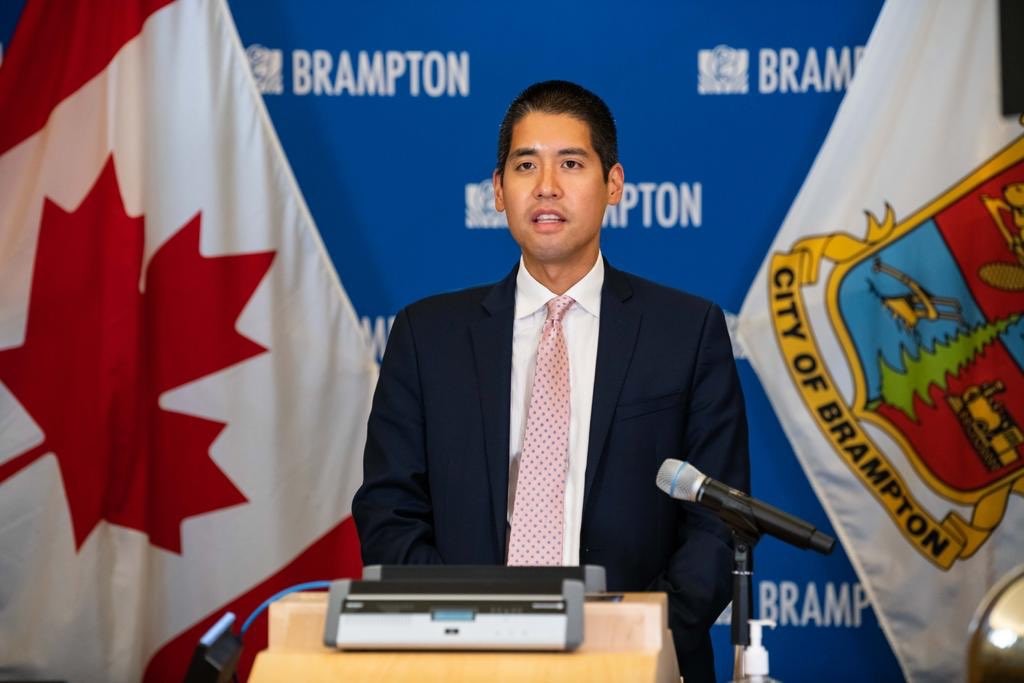
Far more support for online learning needed with extended school closures, unions say
Schools in Brampton and Mississauga will remain closed until January 25, after the Province on Thursday announced a last-minute decision to delay the return of in-person learning.
The decision means parents have just three full days to finalize plans to keep their children at home. Before the announcement, classroom learning at elementary schools was expected to start again on Monday and secondary schools were due to reopen on January 22.
Schools in northern Ontario will return as planned.
In response to the announcement, Peel teachers’ union leaders, who called for the school closures to remain in place until the viral spread subsides, say supports for online learning need to be improved. Some educators say it is not working in its current format.
Since the start of virtual learning forced by the pandemic, teachers’ unions across the province have pointed out a number of gaps for students. Those with special needs or who simply thrive in face-to-face settings have not been able to get the hands-on teaching that helps them succeed. Others who need more focus or direct supervision are hard to monitor in virtual settings. While even students who normally perform well, simply cannot be kept as engaged, even in video-classrooms.
The inability to perform certain assignments or take tests in the same way, and the difficulty with grading based on online work, are all issues that need to be overcome.
Access to technology is another major problem. Despite the efforts of most boards to provide devices for those students who need them, unreliable internet connections and even hardware issues can also pose major challenges for student success.
But many teachers have reported the biggest challenge is simply keeping students, especially younger ones, interested and motivated while they sit isolated in some distant corner of their home with so many of the usual educational and social stimulants absent.
Unions are now highlighting the personal struggles many teachers face.
Demands on some teachers to be ‘live’ with their students through the day, along with attempting to balance their own childcare, are proving near impossible. Speaking to The Pointer, the leaders called on Education Minister Stephen Lecce to revise the online learning format and improve the situation for teachers. They also asked for significantly enhanced protections for in-person learning, when schools reopen.
The Region of Peel’s medical officer of health, Dr. Lawrence Loh, says he supports the decision to keep schools closed. “By extending online learning, we will be able to study the data and determine what additional measures, if any, need to be in place before welcoming staff and students back into schools,” he said in a statement.

Peel's medical officer of health, Dr. Lawrence Loh says extended closures will allow more time to study the available data around COVID-19 spread in schools.
At a Thursday news conference, Ontario Chief Medical Officer David Williams and Dr. Dirk Huyer, in charge of coordinating the Province’s outbreak response, said the decision to delay was in reaction to rising case counts. The initial decision to have all students begin online learning from January 4 was designed to monitor the effectiveness of the province-wide shutdown; as cases continued to rise after mid-December, Queen’s Park officials say they were forced to extend closures.
“There was a plan that was tied to the lockdown,” Huyer said at a news conference. “Unfortunately, the plan didn’t go as was anticipated, that’s what led to changes unfortunately at [short-notice].”
The news was welcomed by Peel’s local elementary teachers’ union, which yesterday wrote to Loh, asking him to keep schools closed. “This issue cannot be effectively addressed with a province-wide, one-size-fits-all response. Nothing has changed. A regional, data-driven response is required,” president Gail Bannister-Clarke wrote in an open letter.
In a release announcing the decision to delay in-class learning, the Province cited positivity rates among young people as a key area of concern. “Most troubling, the positivity rate for kids aged 12-13 years old increased from 5.44 percent in late November, early December to nearly 20 percent in early January,” the release reads.
In its announcement, the Province stressed a history of limited transmission within schools, but admitted the rampant viral spread currently is significantly harder to contend with than when schools had returned in September.
Thursday marked a bleak point in Ontario’s fight against the novel coronavirus. The Province reported 89 deaths, the highest figure since the start of the pandemic and 3,519 new infections across Ontario, also a high mark since the beginning of the pandemic.
In Peel, there were 568 new infections reported Thursday by Health Minister Christine Elliott, after 523 were recorded Wednesday, part of a disturbing trend since Boxing Day.
Williams suggested new measures would be needed to effectively screen students if they do return in a fortnight, but did not offer details. He said Minister Lecce would unveil his plan in the coming days.
View COVID-19 Map of Peel Schools in a full screen map
The last minute announcement has left parents scrambling. Among those hardest hit by the sudden change are secondary school teachers in Peel with their own young children at home. They will now have to manage synchronous learning for their students while simultaneously overseeing their kids.
Changes to the Ministry of Education’s online learning plans mean high school teachers are expected to complete 225 minutes of synchronous (or ‘live’) teaching per day. For those with young children, who require significant supervision as they also learn online at home, it’s an impossible balance, teachers say.
“Many of our teachers have elementary school-aged children and they’re expected to be teaching online all day, but also now watching and facilitating the instruction of their own children at home,” Ryan Harper, acting president of the Ontario Secondary School Teachers’ Federation (OSSTF) Division 19, told The Pointer. “You [can’t] throw your six-year-old in front of a computer and say, ‘Just sit there for the next couple of hours, I am going over here to do my work.’ It usually requires a lot of parental support to help them with it.”
Harper and OSSTF D19 have been vocal in their demands for a safer in-class learning environment, with asymptomatic testing of students and smaller class sizes. It’s a debate they’ve been having with Minister Lecce since the summer.
"The best medical and scientific experts have been clear: while schools have been safe places for kids, the sharp rise in community transmission puts that progress and Ontario families at risk," Lecce acknowledged in a media release, which noticeably contrasted with his statements since the fall, pointing out the comparatively low rates of transmission in educational settings, while community infection in some parts of the GTA, in particular, remained a serious concern. Certain neighbourhoods in Peel have consistently had among the highest rates of infection in Ontario, but Lecce and other provincial officials were at pains to point out this does not mean high rates of transmission were being seen inside neighbourhood schools.
The risk now, however, with as many as 20 percent of children is certain age cohorts testing positive due to exposure during the holidays is that even if they are asymptomatic, returning to classrooms could infect many more students and staff.
The prospect of maintaining mandatory online learning until the current infection spread subsides, will pose challenges to educators.
Bannister-Clarke agrees with Harper, saying the current situation isn’t working for her staff. Despite being months into online teaching for some, with virtual learning being imposed for all the expectation of directly transposing the classroom into a videolink is unrealistic and means, eventually, things will “implode”.
“Teaching isn’t happening the same way, students aren’t responding the same way,” she told The Pointer. “We need to adjust; the Minister needs to give that direction… and talk about how we can make a change in the next three weeks to really help students and workers with a program that people can actually continue with.”
Both Bannister-Clarke and Harper point out that schools for students with special needs remain open for in-class learning.
“We need to look at that and provide something for them that honours their specialized programs, but also ensures that there is safety for them in the classroom as well as for the workers,” Bannister-Clarke added. “Those classrooms should be closed right now.”
Email: [email protected]
Twitter: @isaaccallan
Tel: 647 561-4879
COVID-19 is impacting all Canadians. At a time when vital public information is needed by everyone, The Pointer has taken down our paywall on all stories relating to the pandemic and those of public interest to ensure every resident of Brampton and Mississauga has access to the facts. For those who are able, we encourage you to consider a subscription. This will help us report on important public interest issues the community needs to know about now more than ever. You can register for a 30-day free trial HERE. Thereafter, The Pointer will charge $10 a month and you can cancel any time right on the website. Thank you.
Submit a correction about this story


